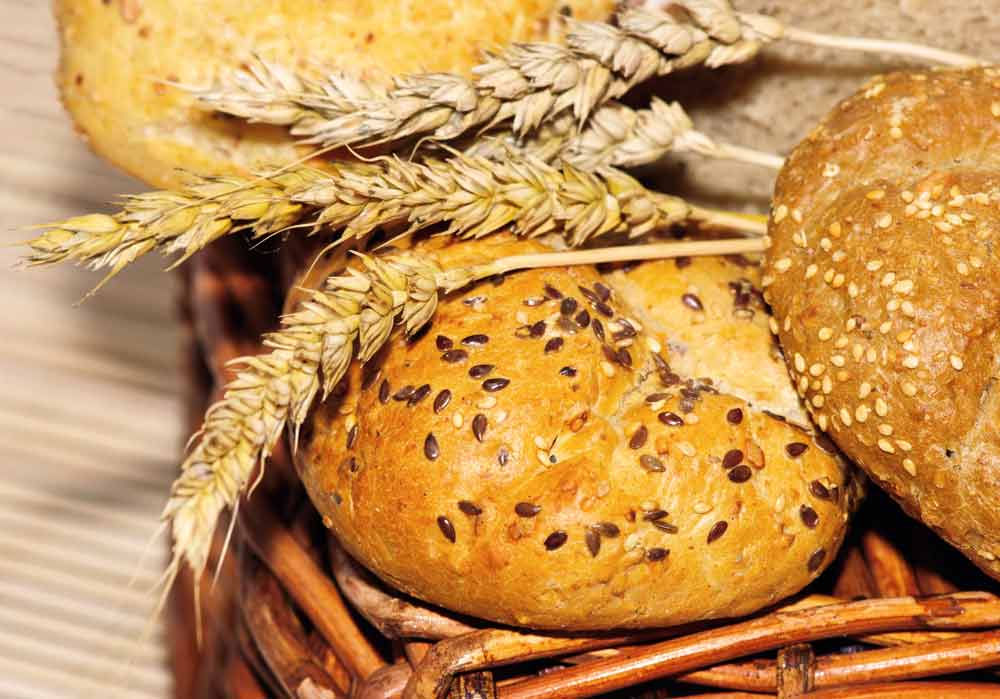A 2012 Italian study shows why you should think twice before indulging in carbohydrates. The study compared acne patients to people with clear skin and showed significant insulin resistance and much higher insulin level in acne group.
Why insulin matters
As I’ve explained many times, insulin is a cornerstone hormone in acne.
- Increase in insulin level causes an increase in IGF-1 and androgen hormone levels.
- All of these hormones can stimulate your skin to produce more sebum and keratin, and thus lead to blocked pores and acne.
- One study showed a correlation between IGF-1 and sebum production, as IGF-1 hormone level increased, so did sebum production.
- Studies consistently show that switching to low glycemic index diet reduces both acne and insulin level.
- Treatment with metformin and other insulin sensitizing drugs can reduce acne.
For all the technical details, please see this paper: Role of insulin resistance and diet in acne.
That’s why keeping blood sugar and insulin levels under control should be one of your top priorities – especially when you see the results from this study.[am4show have=’p6;p7;’ guest_error=’guest’ user_error=’member’ ]
Study of insulin resistance in men
The best study on insulin resistance and acne was published in 2012 by a group of Italian researchers. In the study, they compared 22 15 to 26 year old men with acne to a control group of 22. The control group was carefully matched to be as similar as the patient group as possible, so similar age, BMI, smoking status, etc. The main difference between the patient and control group was whether they had acne or not.
All the participants were given oral glucose tolerance test (oGTT). In the test you are asked to drink water with 75g of sugar dissolved in it, and 2 hours later a doctor measures your blood sugar and insulin levels. The test measures health of your blood sugar metabolism and is a good approximation of what happens when you eat high glycemic index carbohydrates.
Here are the results:
| Acne | Clear skin | Difference | |
| Fasting blood sugar (mg/dl) | 88.9 | 84.3 | +5% |
| Fasting insulin (µU/mL) | 10.6 | 5.5 | +93% |
| 120 min oGTT blood sugar(mg/dl) | 86.5 | 85.4 | +1% |
| 120 min oGTT insulin(µU/mL) | 30.1 | 7.6 | +296% |
| IGF-1 (nmol/L) | 338.8 | 308 | +10% |
| Bioactive testosterone (pg/ml) | 16.8 | 20 | -16% |
| Total testosterone (ng/ml) | 5.1 | 5.3 | -3% |
| DHEAS (µg/dl) | 232.5 | 211.7 | +10% |
Source: Insulin resistance and acne: a new risk factor for men?
oGTT figures refer to measurements during the oral glucose tolerance test. Fasting values refer to measurements taken first thing in the morning, before you have eaten anything (i.e. in a fasted state).
You can see the striking difference in insulin level. Acne patients had almost twice as high fasting insulin level and about 4 times higher post-meal (oGTT) insulin level.
There was no real difference in androgen hormone level between the patients and the control group. So it seems that the difference in acne was mainly due to higher insulin level, and probably also by genetic differences in sensitivity of skin to the hormones.
Also, notice how there was no real difference in fasting and post-meal blood sugar levels. So if you were using blood sugar monitor at home, you might not even detect the problem.
How applicable are these results?
When you look at the results of any scientific study, you always have to ask how applicable are the results? The above study was done with young men. Does the same thing happen with older men? What about women?
The participants in the above study were classified as treatment resistant, meaning that they responded poorly to treatments dermatologists commonly prescribe. If you’ve been to dermatologists many times, then that probably applies to you too.
I would go as far as to say that, if you are a man who suffers from persistent adult acne, then the chances are you are insulin resistant and that eating high GI carbohydrates sends your insulin level through the roof.
Women
The situation is a bit more complicated with women. I’ve seen studies that show insulin resistance in women with adult acne and studies that show little to no insulin resistance. Female adult acne may have different types, some that are driven by androgens and some that are driven by insulin or other factors.
That said, I wouldn’t get too hung up on the type of adult acne you have. I would recommend very similar diet and lifestyle changes for all adult acne sufferers – regardless of the exact hormones that cause your acne. The reason for this is that reducing insulin and glycemic load usually brings down all the hormones linked to acne.
Recommendations
I wanted to write about the Italian study to really drive home the point of how problematic carbohydrates, and especially high glycemic index carbs, can be for acne patients. I hope the 4 x higher post-meal insulin level gives you something concrete to chew on.
Here are some practical recommendations. These are nothing new as I’ve already taken this study into account in my earlier recommendations.
- Get tested if you want to know for sure. I’m sure there are people with acne who have absolutely no problems with carbohydrates, but are you one of them? The only way to know for sure is to get tested. Talk to your doctor about oral glucose tolerance test. They shouldn’t be too expensive, you just have to spend a few hours at a hospital/clinic. And also make sure you ask your doctor to also measure your insulin level, not just blood sugar.
- As far as possible, eliminate high glycemic index carbohydrates from your diet. High GI carbs increase blood sugar and insulin levels more than other types of carbs and are the absolutely worst for your skin.
- Reduce overall carbohydrate intake and eat more fat. Eating less carbohydrates reduces insulin load on your body and that should help your skin. Based on all the studies I’ve seen, fat seems to be the safest macronutrient for your skin, see this post for more. Protein also increases insulin level (but not as much as carbs) and leucine (amino acid found in practically all food proteins) stimulates mTor activation (very bad for your skin). I don’t mean that you have to go low carb, just eat less carbs, most people eat too much of them anyway.
- Eat most of your calories early in the day. Research shows that insulin sensitivity peaks in the morning, meaning that food eaten in the morning increases insulin level less than the same amount of food eaten in the evening. In an earlier post I wrote how proper meal timing can be helpful in hormonal acne.
- Eat and live healthy. General healthy living advice also applies as inflammation is one of the factors causing insulin resistance. So eat your fruits and vegetables and avoid trans fats. Also make sure to get enough sleep, keep stress under control, etc. Over time all of those can and will affect your insulin level.
That’s about it. There’s a good reason to believe that insulin resistance and high insulin level are the main factors for many people with adult acne. Keep in mind the 4 times higher post-meal insulin level next time you think about what to have for dinner.



Is there any information about the weight of the subjects? I don’t know if I’m insulin resistent but I have always been very lean (my current BMI is 18.5-19, I am around 51 kg) no matter what I eat and even if I don’t exercise at all. I do get some belly fat but even that is tiny compared to other people and I eat more that most women I know (I am a woman) and even some men I know. Even when I used to eat a lot of candy, bread and junk food I was very lean. I wasn’t even skinny fat. I have never been underweight either. But sugar does make me break out so I guess insulin might be a problem but everywhere I read they say that lean people usually don’t have problems with insulin. I’m confused.
This study only included male subjects, so not sure how relevant this study is to women. But from the top of my mind, the study included both overweight and normal weight people – not sure if any of them were underweight.
Yes, insulin resistance is more of a problem for overweight people, but it can be a problem for some normal weight people too.
Belly fat in women can be a sign of excess androgens, or perhaps shortage of estrogens. From what I know women who are too thin can have problems with estrogen deficiency. Starvation (due to not eating enough or burning too many calories through exercise) can reduce or shut down female hormone production and as a result of that your androgen/estrogen balance tips towards androgens.
Though I can’t say if this applies to you. There are also other reasons for excess androgens, such as overgrowth of androgen-producing tissues.
I recommend you talk to this with a doctor.
From what I’ve seen, women with androgen-related problems (whether overweight or not) usually benefit from reducing insulin. Insulin stimulates even more androgen release from the ovaries.
Is oatmeal ok to eat? I have the Quaker Original oatmeal. Its Whole Grained Rolled Oats.
It’s less about the specific carbs you eat and more about the amount. If you keep your overall carb intake at 30 to 40% of total calories you should be fine.